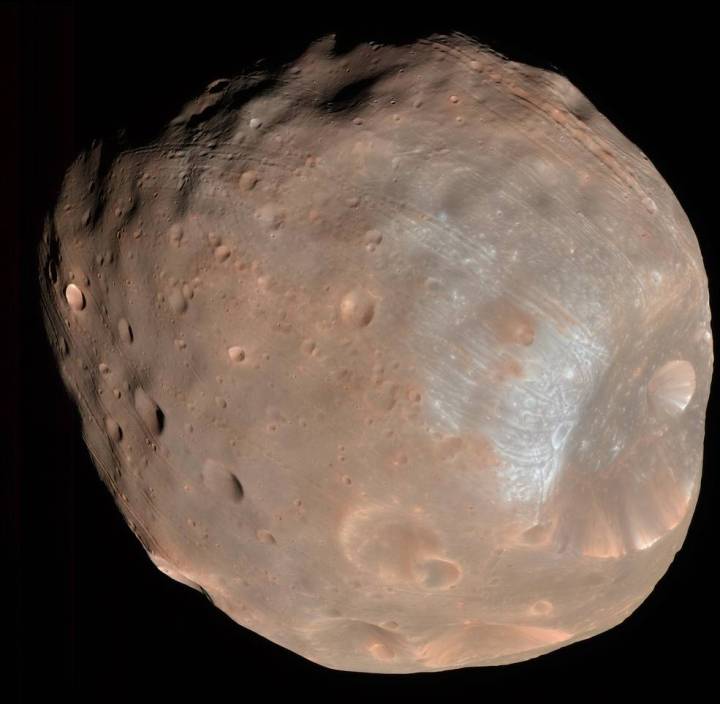
In the search for evidence that there was once life on Mars, most current research focuses on the surface of the planet, like the work that NASA’s Perseverance rover is currently doing. But a new study by researchers from the Japanese space agency (JAXA) suggests that there’s another location we should be searching for ancient preserved microorganisms: Mars’s moon Phobos.
“Mars is not alone because it has two small moons, Phobos and Deimos,” the authors write. “Throughout the history of Mars, numerous asteroidal impacts on Mars have produced martian impact ejecta, and a fraction of the ejected material has been delivered to its moons.”
They suggest that because Phobos is closer to Mars than Deimos, it has been covered in more material from Mars that is thrown up during asteroid impacts. If there was life on Mars, microscopic lifeforms could have been transported to Phobos by these impacts.
However, Phobos isn’t a comfortable place to call home. The authors describe it as “highly inhospitable,” pointing out its lack of air and water and its high levels of radiation. So it’s almost certain that there’s nothing alive on the moon now. But what there could be is evidence of life from millions of years ago.
This evidence “includes any potential microorganisms that could have been alive on Mars and were recently sterilized during or after the delivery to Phobos, and the microorganisms and biomarkers that had been processed on ancient Mars before the delivery to Phobos, including potential DNA fragments,” the authors write. This is exciting because, as it has no atmosphere, Phobos could preserve these signs of life like a natural time capsule.
To investigate this possibility, JAXA will be launching the Martian Moons eXploration probe to Phobos in 2024. The probe will land on the surface of the moon, collect one or two samples from the surface or from the deeper regolith beneath, then return the samples to Earth by 2029. On its way back, MMX will swing by Mars’s other moon, Deimos, for several flybys as well.
This sample from Phobos could contain indications that there was once life on Mars in the form of biomarker molecules or even any currently living organisms that could be there (though experts think it’s very unlikely that there is life on Mars right now). Either way, the mission could learn a lot about Mars from visiting Phobos.



